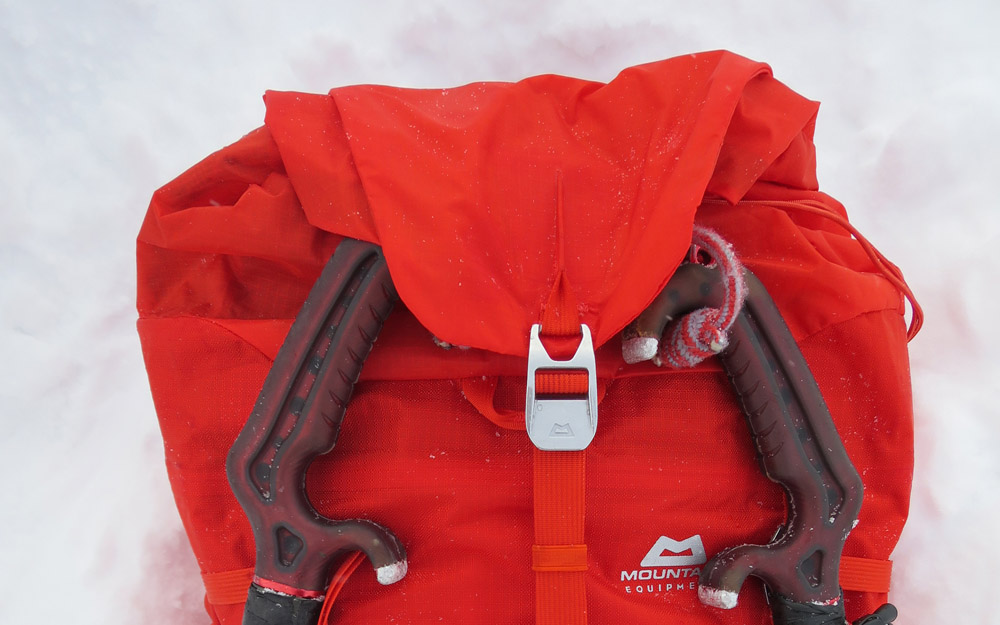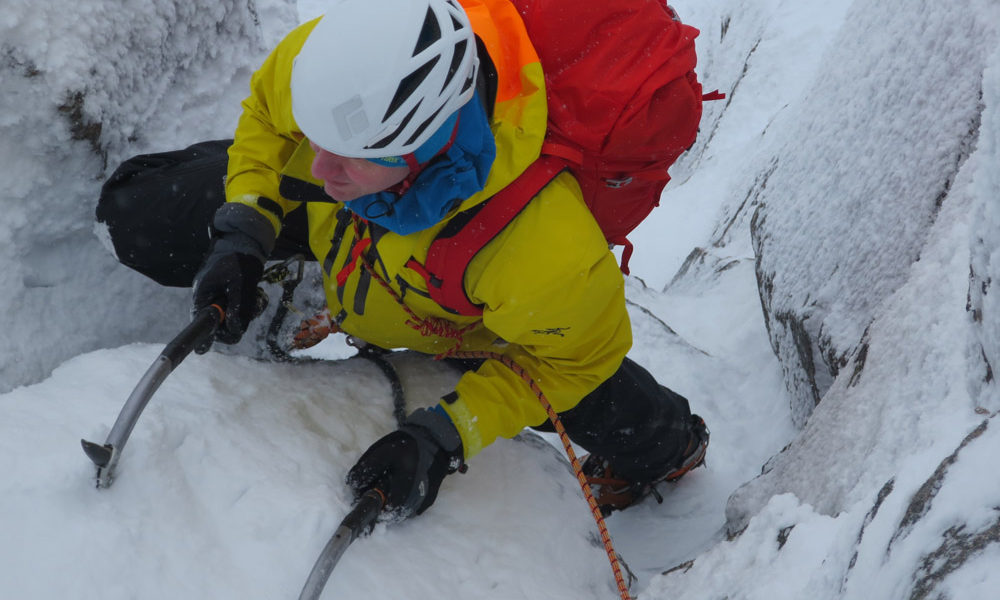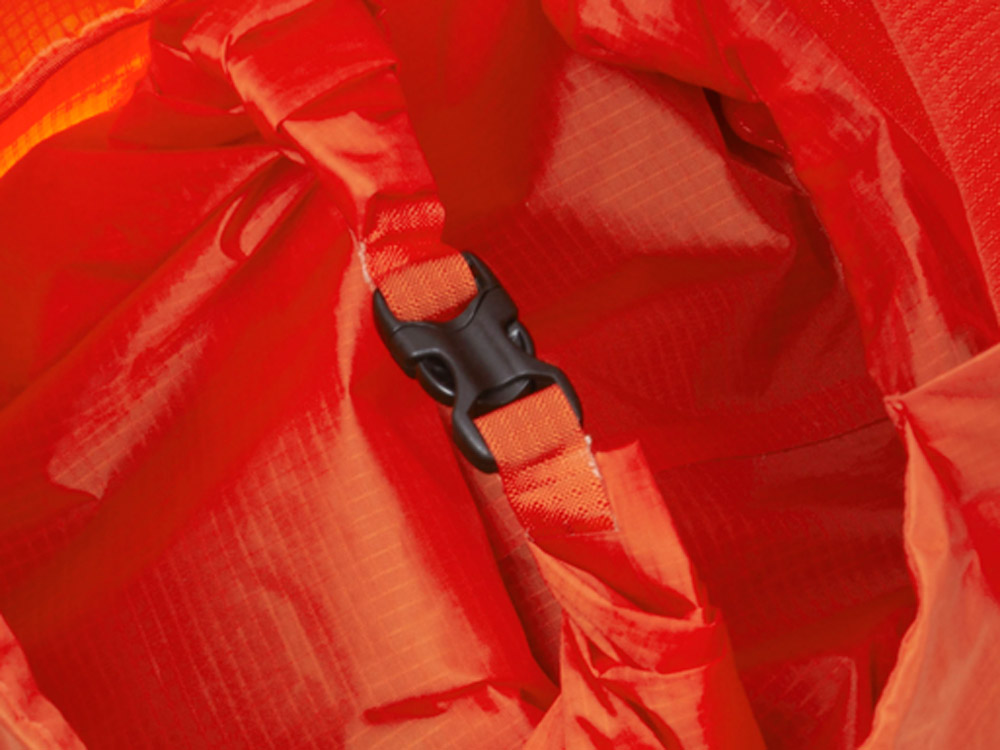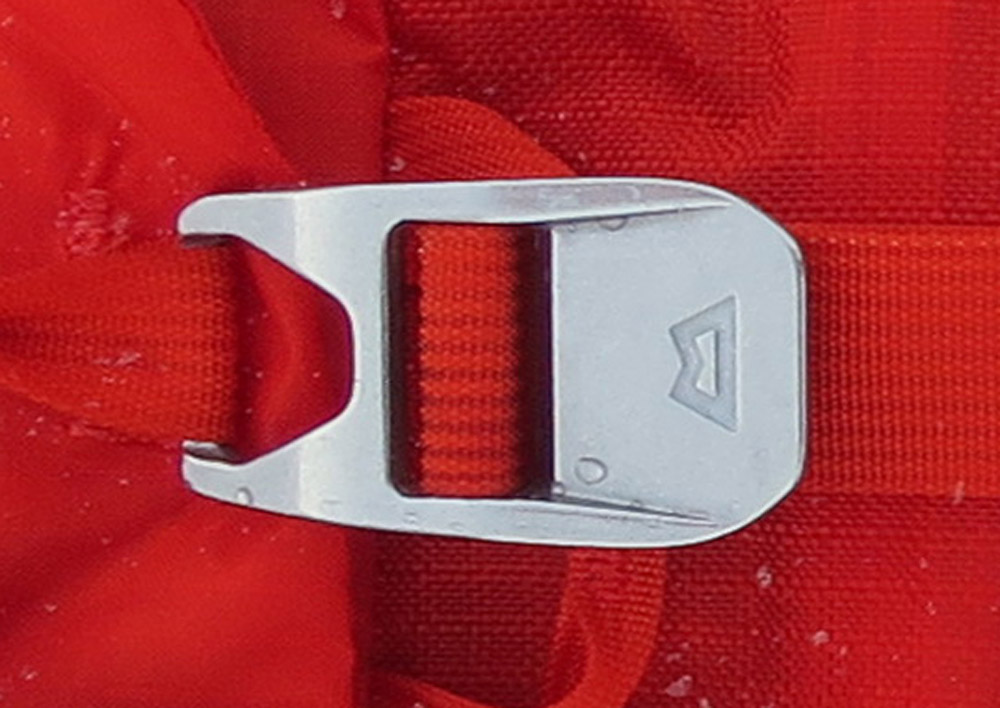MOUNTAIN EQUIPMENT SET OUT TO REDEFINE THE STANDARD FOR ALPINE RUCKSACKS WITH THEIR NEW TUPILAK RANGE – WILL HARRIS TESTS OUT THE 37+ VERSION TO SEE IF THEY'VE SUCCEEDED...
It has been well over a decade since Mountain Equipment have produced a rucksack, and with their new Tupilak range – consisting of 30+ (£180), 37+ (£200) and 45+ (£220) models, they have produced a trio of packs aimed squarely at alpinists and winter mountaineers. ME claim that their packs are both lightweight and functional, built to serve climbers looking for an uncluttered, minimalist design, and while testing out the mid-sized model during the Scottish winter season on both walk-ins and on steep ice and mixed routes, we have been impressed by how well the 37+ pack lived up to these claims.
Light is (generally) right
Following on from the publication of Mark Twight’s ‘Extreme Alpinism’ back in 1999, a book about how to climb hard alpine routes in a single-push style, taking a lightweight approach to gear has gone from being a novelty to the norm. In some quarters, this has led to an almost fetishisation of weight saving, with function sacrificed to shave grams, while other manufacturers have, perhaps slightly cynically, tried to sell a wide range of gear merely by attaching a ‘light’ nametag to it, With the Tupilaks, however, ME seem to have got the balance just right, producing packs that are seriously light but don’t compromise on functionality.
So how does the Tupilak compare against some of the other leading manufacturers’ offerings in this category? Well, the Tupilak 37+ weighs in at 780g with all of its optional components left in place, while when stripped down this reduces to an impressively light 570g when the compression straps, waist belt padding and foam back support are removed, This compares well with the Arc’teryx Alpha FL series, with the 30L and 45L sizes coming in at 575g and 650g respectively, and Patagonia’s Ascensionist 40L which weighs in at 878g.
Mountain Equipment have developed all-new fabrics specifically for the Tupilak pack range (Pact fabric in 100 and 300 denier weights), and during our test we were impressed by how they performed, with the low weights seemingly not to have affected durability. In addition, we found them to offer excellent weather resistance, even if they may not be fully waterproof.
Carry comfort
Out on the hill, the Tupilak is comfortable to carry when loaded up for a full Scottish winter day out, with the minimalist foam back padding and removable waist straps providing more than enough protection. More importantly, it has clearly been designed with movement in mind, with its slim body and high shoulder-strap attachment points ensuring that it never feels like it gets in the way when climbing. As with other good climbing sacks on the market, the waist belt can be fastened neatly behind the pack to keep your harness clear when climbing.

A small flap prevents snow or rain entering the space above the main compartment
The closure system on the Tupilak is simple yet effective, taking elements of those found on the Arc’teryx and Patagonia models discussed earlier and combining them to make something that works well. An internal roll-top fastening keeps everything inside the main compartment free from snow but can be tucked away if conditions make this unnecessary. A drawstring fastener pulls the top of the main compartment closed, and a small flap then seals the hole created by this, cinched shut with a vertical strap. We found that fastening the roll-top with most of our gear and then placing a climbing helmet on top, before closing the draw string, worked really well. This is also handy for keeping wet items such as gloves away from the rest of your (dry) kit in the main compartment.
One of the neatest features of the Tupilak is its accessory pocket, a floating pouch which can be accessed via both internal and external zips. Internally this sits above the roll-top seal, making it easy to get to and ensuring that its contents don’t get trapped in by other gear stuffed into the main compartment. This pocket is big enough to take goggles, a headtorch, lunch and the other odds and ends needed for a winter day out. This good-sized pocket adds greatly to the pack’s usability and certainly gives it an advantage over the Arc’teryx Alpha FL, for example.

Metal toggles thread through the heads of your tools to secure axes to the pack
The ice axe attachment system keeps picks tucked away securely, with the metal toggles designed to slot though the head of the tool, fitting axes from all major hardware manufacturers. The removable side compression straps use a unique clipping system, like that found on the main compartment strap, where a metal fastener with a thin slot is hooked and twisted onto a fabric loop. On first impressions this seems fiddly, but in practice it worked well, even with thick gloves on. Like most things on the pack, the system for removing and attaching the compression straps is simple, light and effective.
Verdict
The Tupilak wasn’t on our desk in time for last issue’s winter rucksack Group Test, but if it had been it would have compared favourably with our top picks, the Alpha FL from Arc’teryx and the Ascensionist from Patagonia. It has some neat and original features, which, combined with its tough but lightweight design, puts it at the top of the list of packs for climbers to try out.
PROS:
– Lightweight yet durable
– Carries well when climbing
– Smart internal/external pocket access
CONS:
– More expensive than its main competitors











